Recently AAS was delighted to receive as a gift a large collection of nineteenth-century manuscripts from the Pike and Wright families of northeastern Connecticut. The collection came in two segments, both the gift of Susan Pike Corcoran in honor of her Pike and Wright ancestors. Caches of family records are rich resources for scholars working in all manner of historical arenas, from economics to genealogical research to social history. The curatorial, cataloging, and volunteer teams processing this donation will be producing a series of blog posts over the next several weeks focused on the Pike-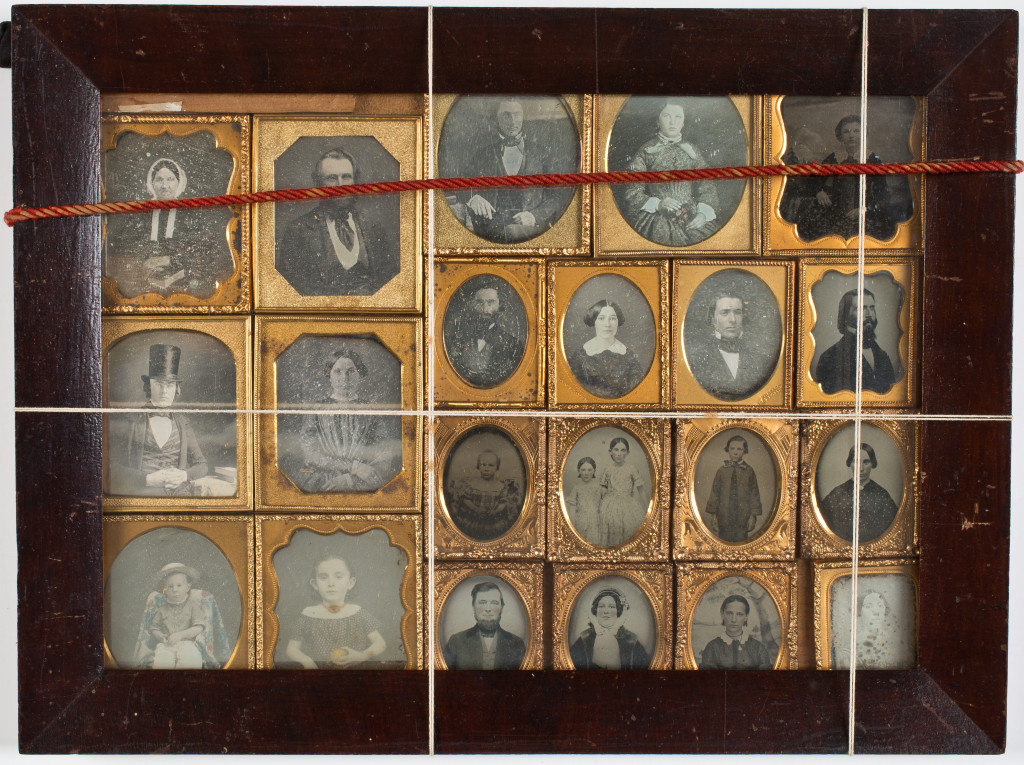 Wright donation. This is the first installment, which we hope will serve as a visual “How do ye do” for several of the people whose writing and livelihoods are represented in the gift.
Wright donation. This is the first installment, which we hope will serve as a visual “How do ye do” for several of the people whose writing and livelihoods are represented in the gift.
Here in the Graphic Arts Department, we were thrilled that the boxes of Pike-Wright family papers, charts, ledgers, and books were accompanied by hundreds of family photographs, ranging in date from the 1840s to the 1920s. Most of the images, even those mounted in photo albums, were carefully annotated with sitters’ names and dates, as well as places, genealogical 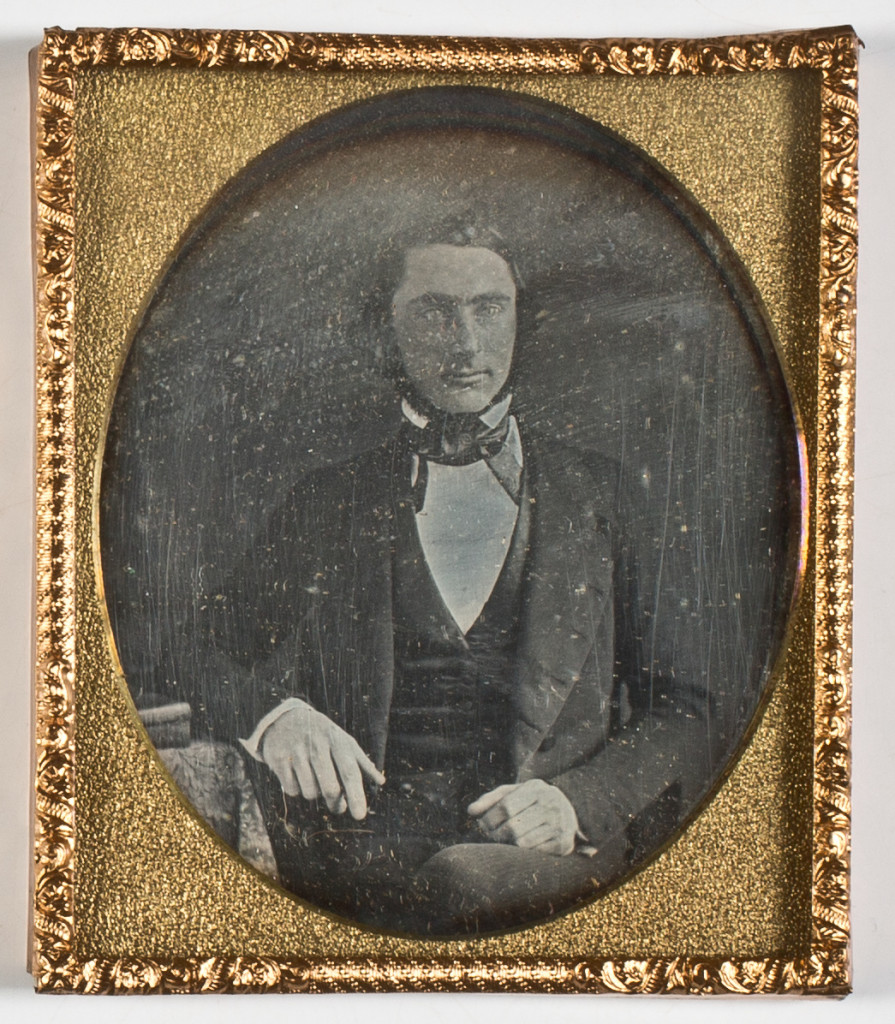 information, etc. In the early twentieth century, two groups of important early photographs had been taken from their cases by family members and mounted in frames (above). Because of the weight of the daguerreotypes and ambrotypes, the wooden frames were collapsing and each image had to be carefully removed and rehoused. These early photos capture several of the contributors to the Pike-Wright archive, including a 1/6th plate daguerreotype of Nathan Staples Pike (1819-1857), a physician who practiced in New England from the 1840s until his death from tuberculosis in 1857 (left). Dr. Pike’s ledger books, medical school notebooks, and tools will be discussed in
information, etc. In the early twentieth century, two groups of important early photographs had been taken from their cases by family members and mounted in frames (above). Because of the weight of the daguerreotypes and ambrotypes, the wooden frames were collapsing and each image had to be carefully removed and rehoused. These early photos capture several of the contributors to the Pike-Wright archive, including a 1/6th plate daguerreotype of Nathan Staples Pike (1819-1857), a physician who practiced in New England from the 1840s until his death from tuberculosis in 1857 (left). Dr. Pike’s ledger books, medical school notebooks, and tools will be discussed in 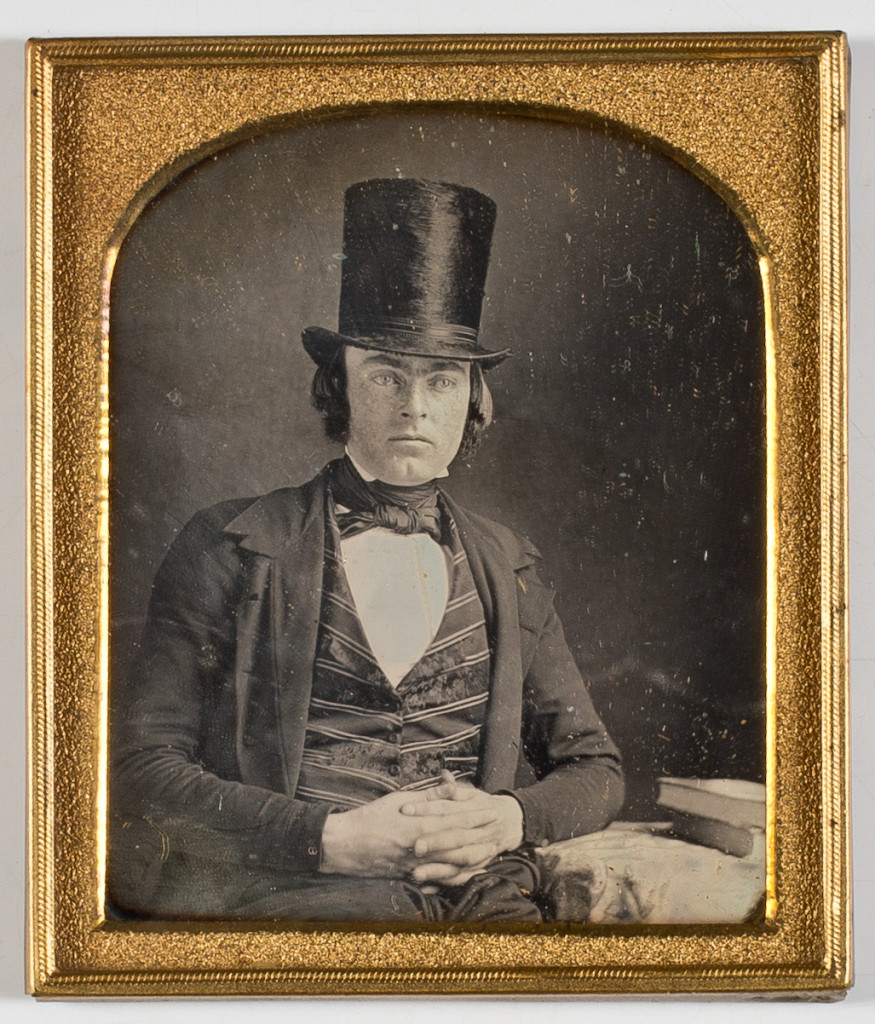 later blog posts. Here, the light-eyed doctor sits confidently before the photographer, likely in the mid-1840s, when daguerreotypy was still a relatively new invention. His younger brother, Thomas Olney Pike (1820-1861), also had a daguerreotype taken about the same time, wearing a fancy striped waistcoat and a stylish top hat (left). Blue eyes apparently ran in the family! Thomas moved away from the homestead in Killingly, Connecticut, after his 1850 marriage and settled in Johnston, Rhode Island, where he died at age 40.
later blog posts. Here, the light-eyed doctor sits confidently before the photographer, likely in the mid-1840s, when daguerreotypy was still a relatively new invention. His younger brother, Thomas Olney Pike (1820-1861), also had a daguerreotype taken about the same time, wearing a fancy striped waistcoat and a stylish top hat (left). Blue eyes apparently ran in the family! Thomas moved away from the homestead in Killingly, Connecticut, after his 1850 marriage and settled in Johnston, Rhode Island, where he died at age 40.
The extensive family photographic archive includes multiple examples of portraits of the same person over time. There are several images of Laura Stone Pike (1838-1922), for example, who married the younger brother of Nathan and Thomas, George Washington Pike, a civil engineer. Laura attended Normal School in New 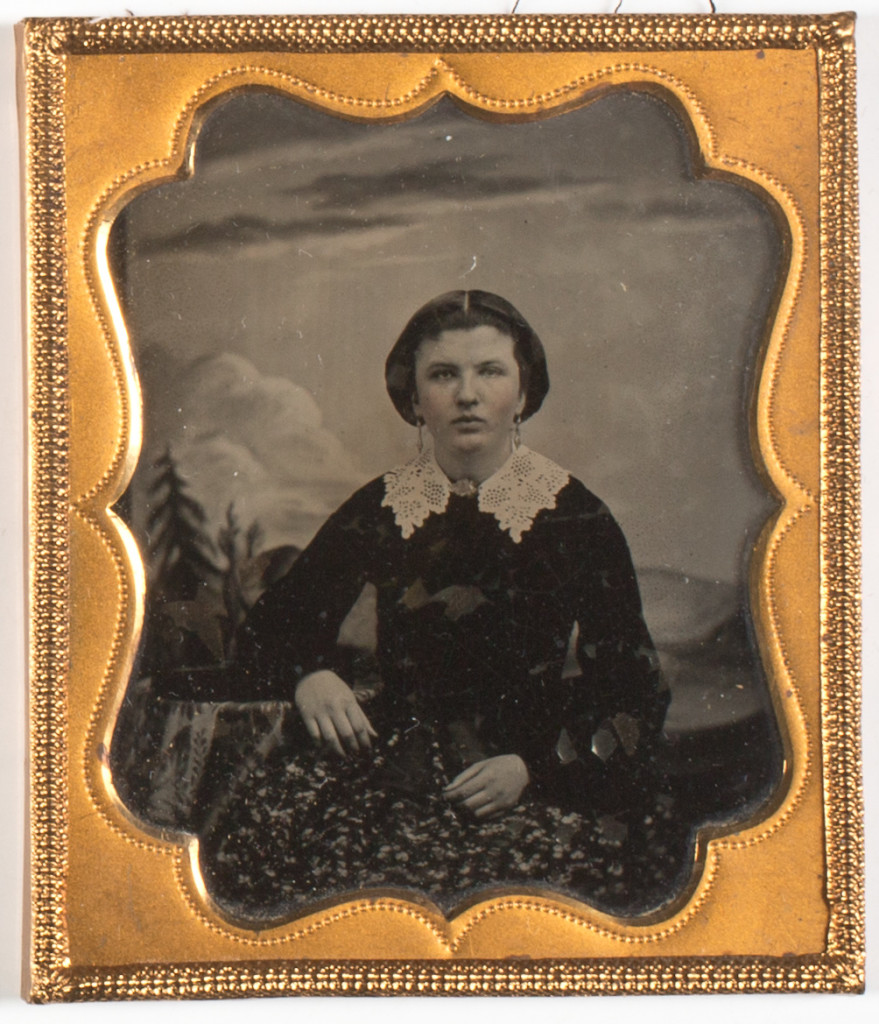 Britain and received her teaching certificate. An undated (likely circa 1860) ambrotype of Laura shows her about age twenty-five with her short hair held back by a comb, seated before a painted backdrop in a photographer’s studio (right). There are many additional images of Laura, standing with groups of teachers at meetings, in photo studios, and posed in front of family homes. The last image of her in the collection is from the 1910’s and was taken in Wakefield, Massachusetts. The now gray-haired woman is shown seated in a wicker chair holding an open book. By placing all of these images of Laura Stone Pike next to each other, the viewer can watch her mature, see her social and family connections ebb and flow, and understand the importance of place to the woman who would become the matriarch of the family.
Britain and received her teaching certificate. An undated (likely circa 1860) ambrotype of Laura shows her about age twenty-five with her short hair held back by a comb, seated before a painted backdrop in a photographer’s studio (right). There are many additional images of Laura, standing with groups of teachers at meetings, in photo studios, and posed in front of family homes. The last image of her in the collection is from the 1910’s and was taken in Wakefield, Massachusetts. The now gray-haired woman is shown seated in a wicker chair holding an open book. By placing all of these images of Laura Stone Pike next to each other, the viewer can watch her mature, see her social and family connections ebb and flow, and understand the importance of place to the woman who would become the matriarch of the family.
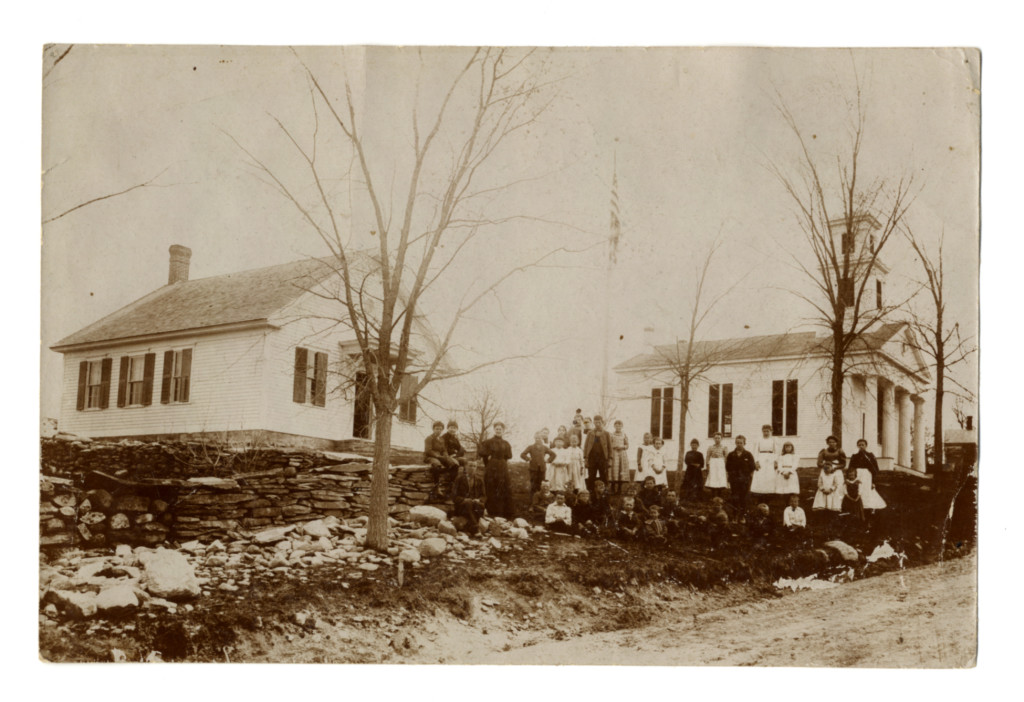 Indeed, there are many images of place, particularly the family homestead in Killingly, Connecticut, found in the photographic collections of the Pike-Wright papers. An 1896 photograph shows Lulu Wright (who married Laura and George’s son William Kinney Pike) standing with school children along a road in front of one of the local schools in town (left). Many photographs of the homestead and surrounding parts of Killingly are also included, with trim town houses at the town center and aged farmhouses, large barns, orchards, and stone walls out in the country. Each photo is carefully annotated, often with dates and specific buildings identified. An image of Four Corners in South Killingly (below) is inscribed, “I boarded in the house at right, 1896.”
Indeed, there are many images of place, particularly the family homestead in Killingly, Connecticut, found in the photographic collections of the Pike-Wright papers. An 1896 photograph shows Lulu Wright (who married Laura and George’s son William Kinney Pike) standing with school children along a road in front of one of the local schools in town (left). Many photographs of the homestead and surrounding parts of Killingly are also included, with trim town houses at the town center and aged farmhouses, large barns, orchards, and stone walls out in the country. Each photo is carefully annotated, often with dates and specific buildings identified. An image of Four Corners in South Killingly (below) is inscribed, “I boarded in the house at right, 1896.”
Because the descendants of the Pike-Wright family were interested in their genealogy and actively maintained and expanded this important collection of papers and photographs, the material will add to our understanding of nineteenth-century life in New England in a very personal and direct way. While unpacking the photographic material, there was a lot of oohing and aahing over the quality of the early photographs, exclamations on the annotations identifying so many sitters, and delight in the repeated recognition of many members of the family over and over. Staff and volunteers processing the papers of Dr. Pike came into the graphic arts workroom to see what he looked like, exclaiming over those blue eyes and noting his obvious physical deterioration as his final illness approached. We have said it often enough, but it is true—a picture is worth a thousand words. When you have a substantial collection of pictures taken and saved over generations, they form their own story, the narrative of an expanding, complex web of family life, love, grief, and physicality that text alone cannot provide.
This collection is the gift of Susan Pike Corcoran in honor of her Pike and Wright ancestors. A special thank you to Daniel Gehnrich, who helped facilitate the Corcoran donation.

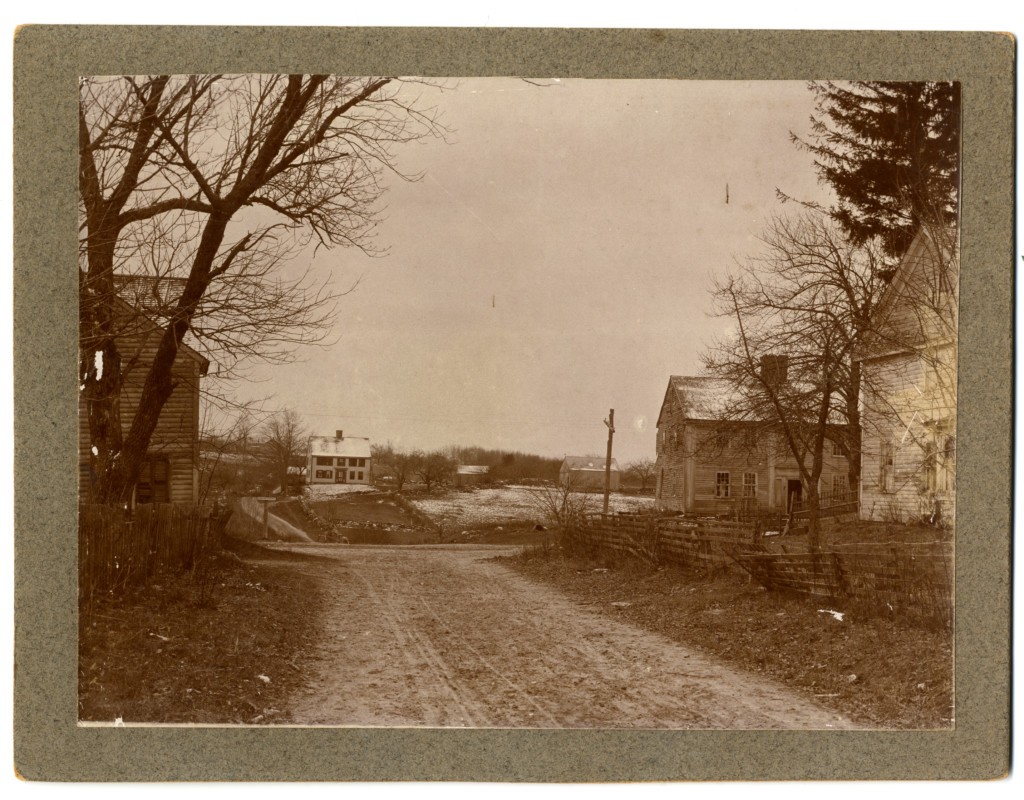
My name is John Pike. My great-grandfather is Doctor Ernest Reginald Pike, from Woodstock, Connecticut. His wife was harriet May Granniss. He too was a physician. He lived at 20 Doctor Pike Road, in Woodstock. His sons names were Otto and Ken Pike. Ernest Pike’s father is Ezra Barker Pike. He was born in Maine.
Is there a connection?
I am John Pike. My great-grandfather is Doctor Ernest Reginald Pike of
Woodstock, CT. He lived at 20 Doctor Pike Road in Woodstock. His father was
Ezra Barker Pike, who was born in Maine. Ezra’s father was Samuel Thurston Pike.
Any connection?
Hello John, We are still processing the genealogical portion of this collection, so we can not yet confirm or disclaim any connection to your relatives. Please check back to the blog as we will be posting more on the Pike-Wright collection in the coming weeks.